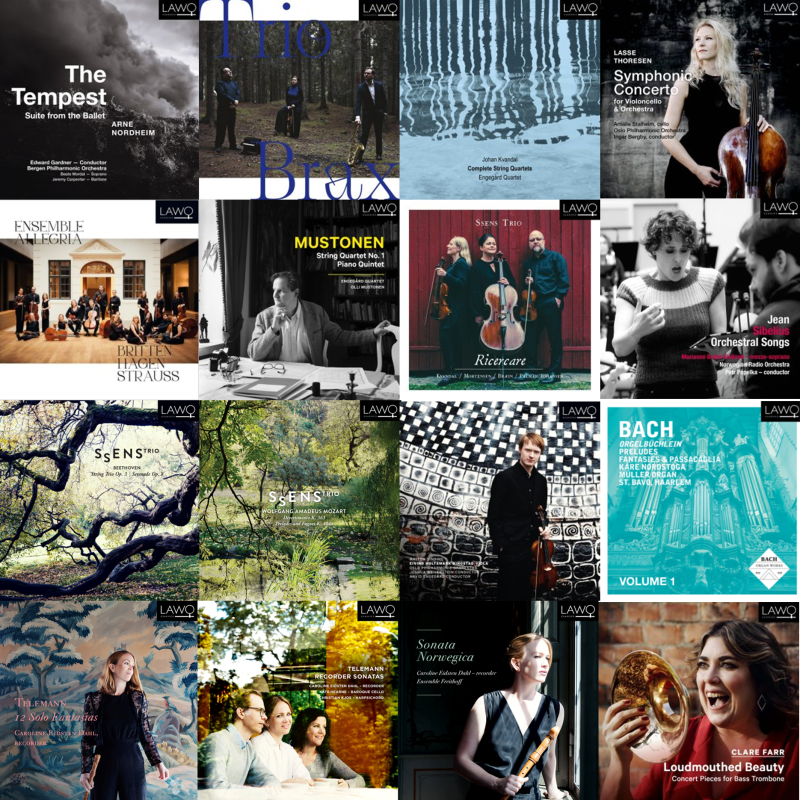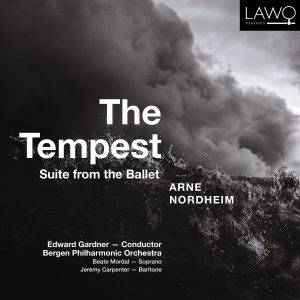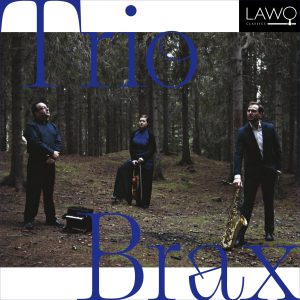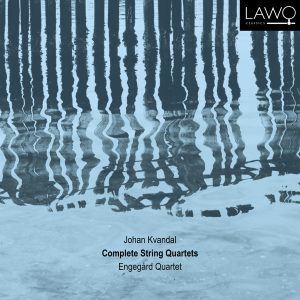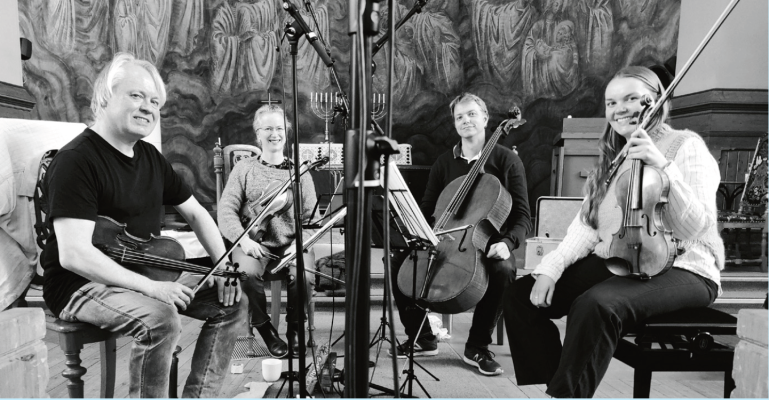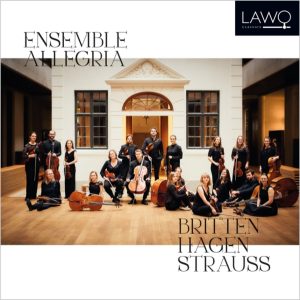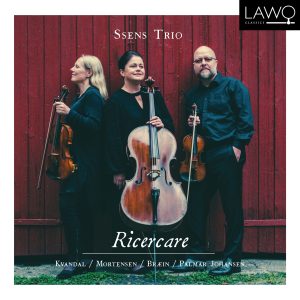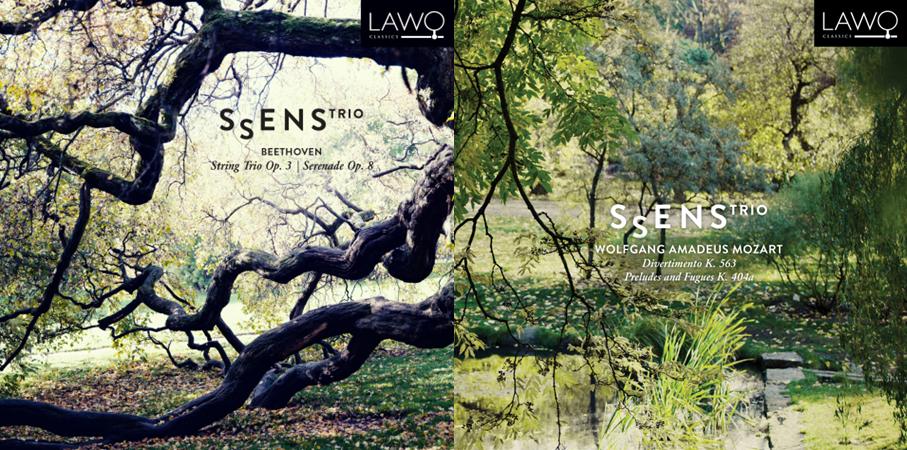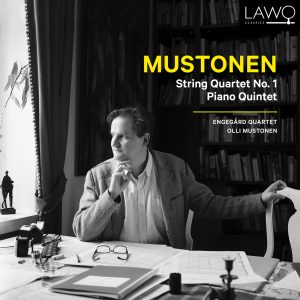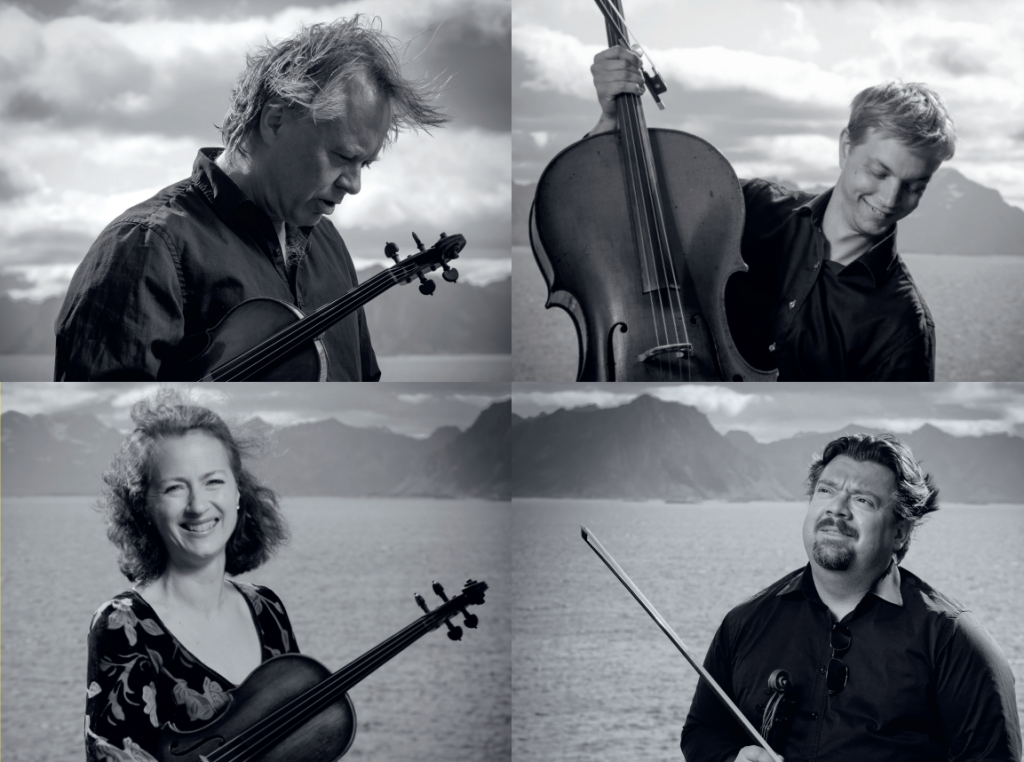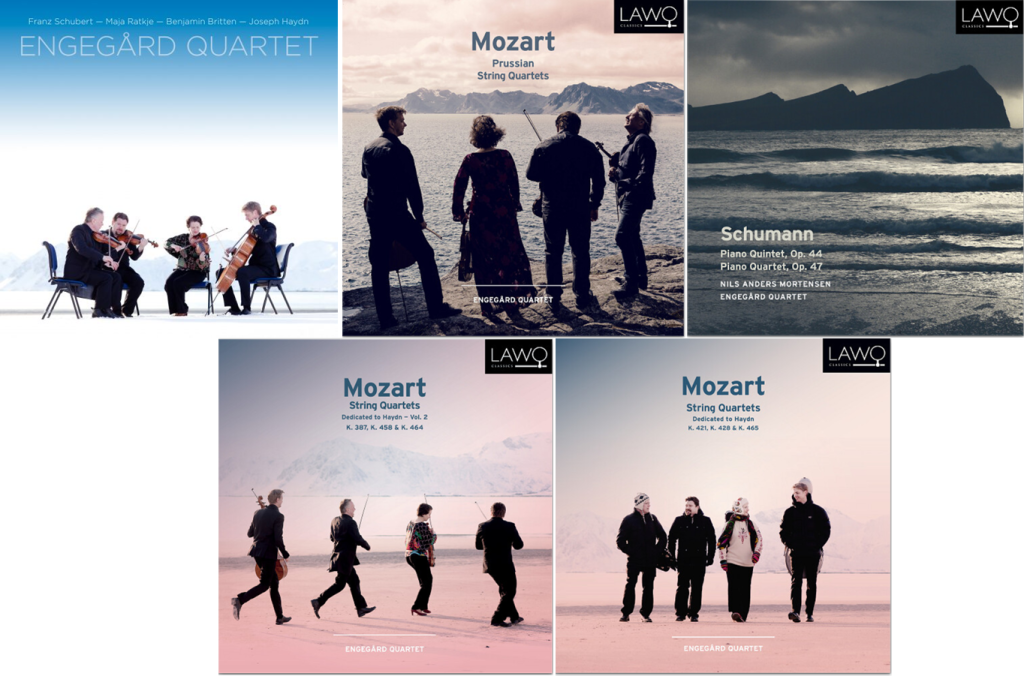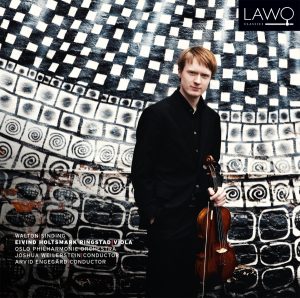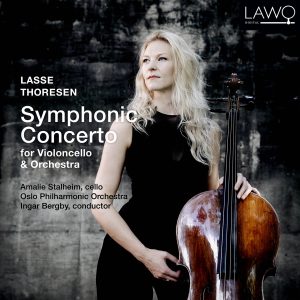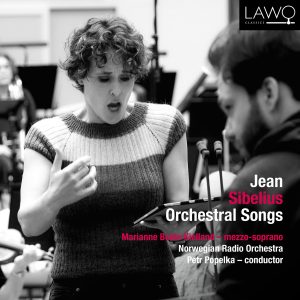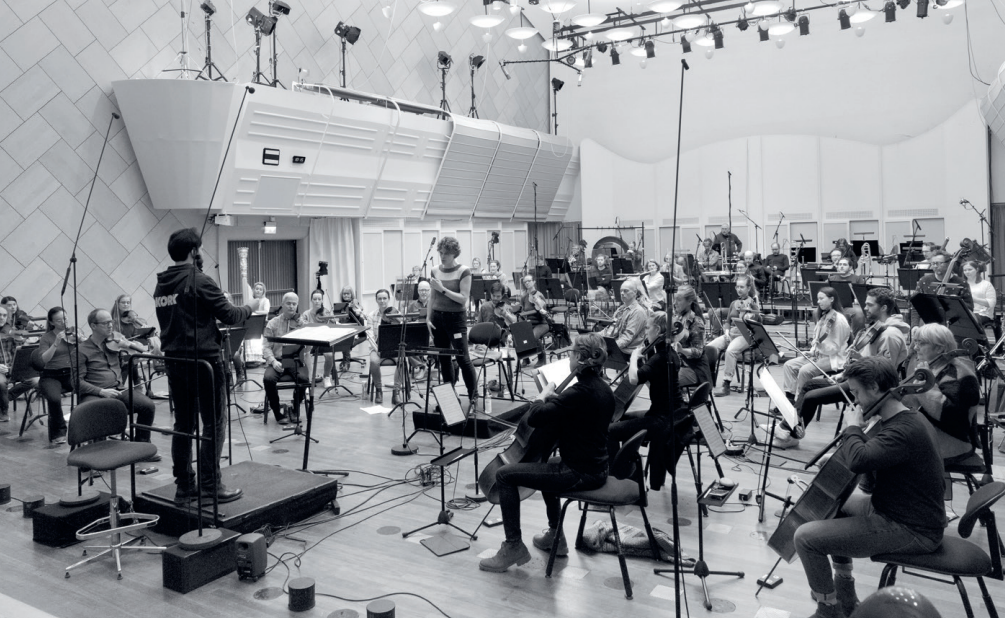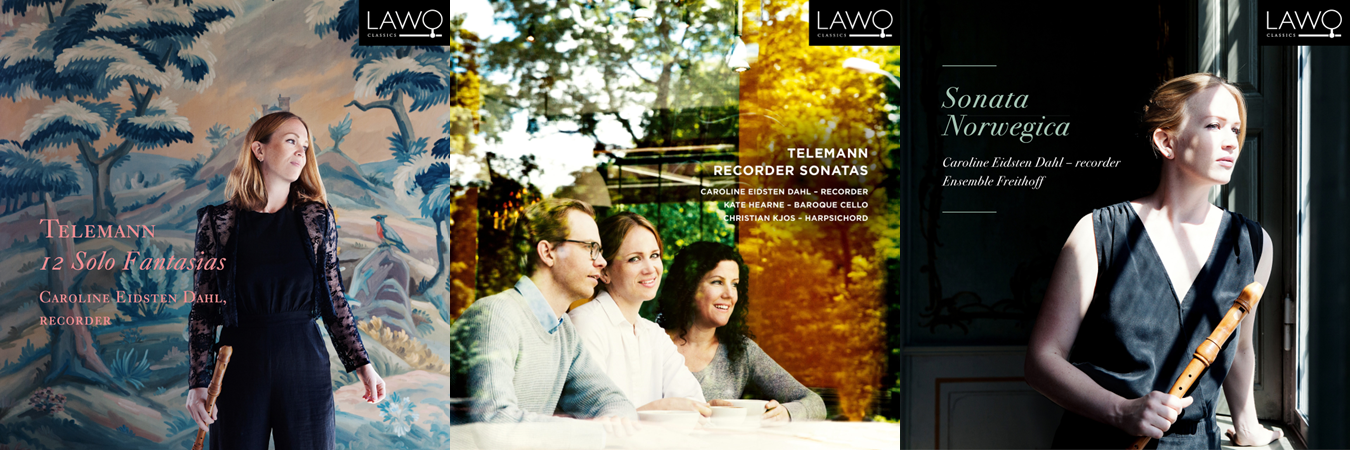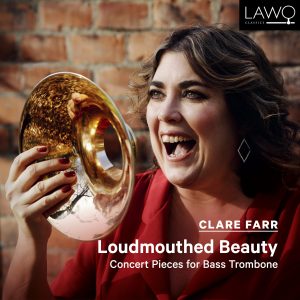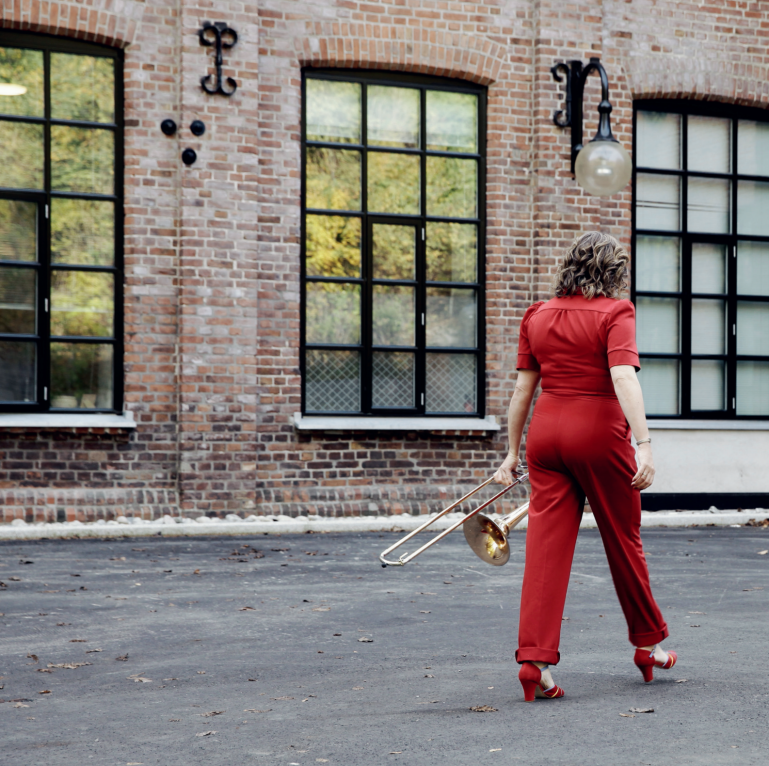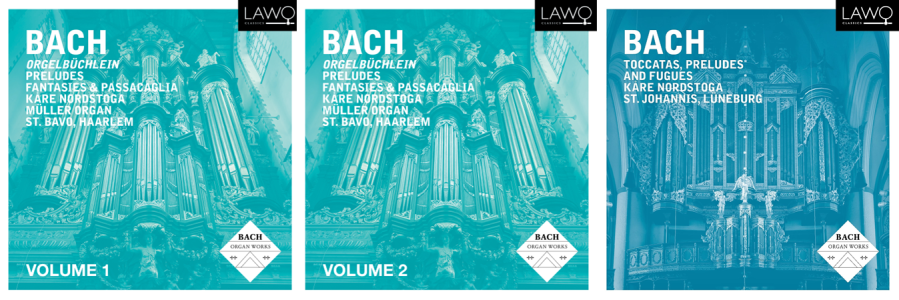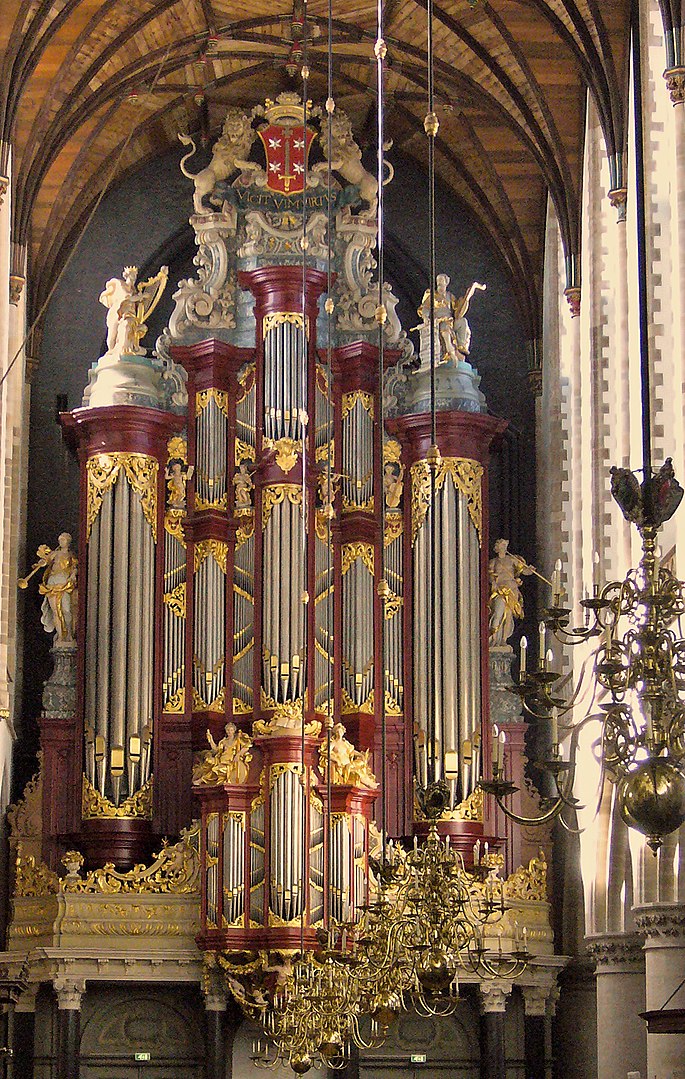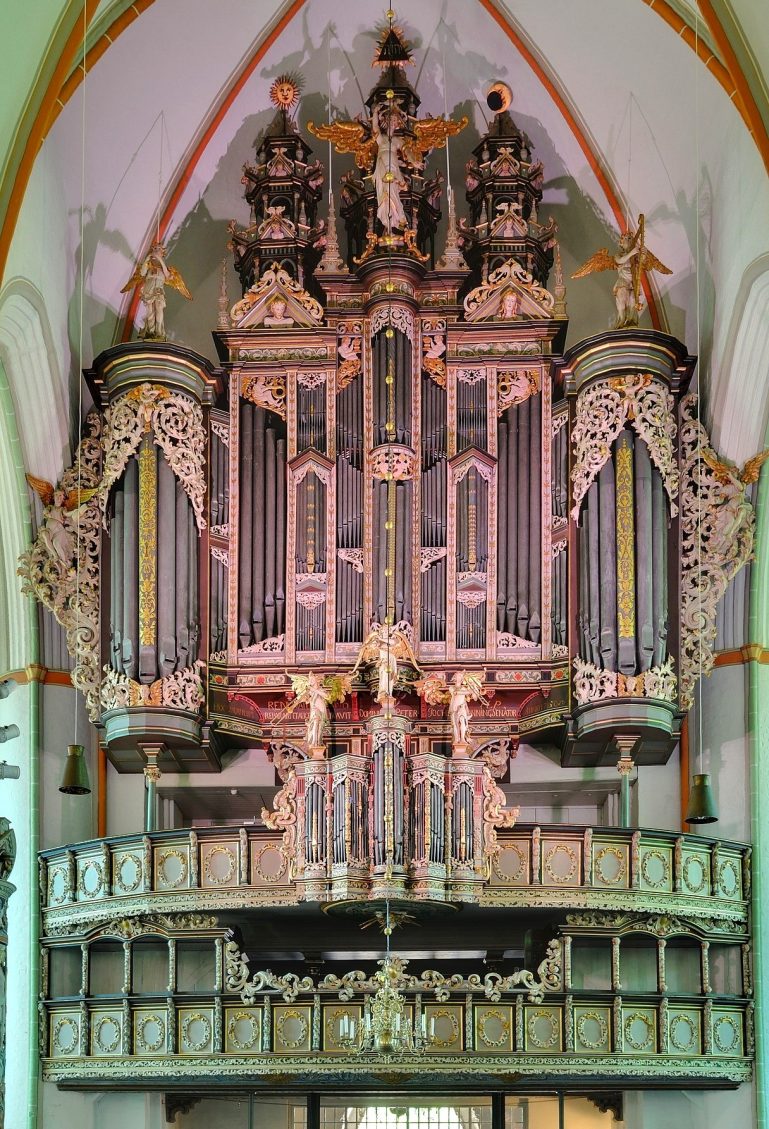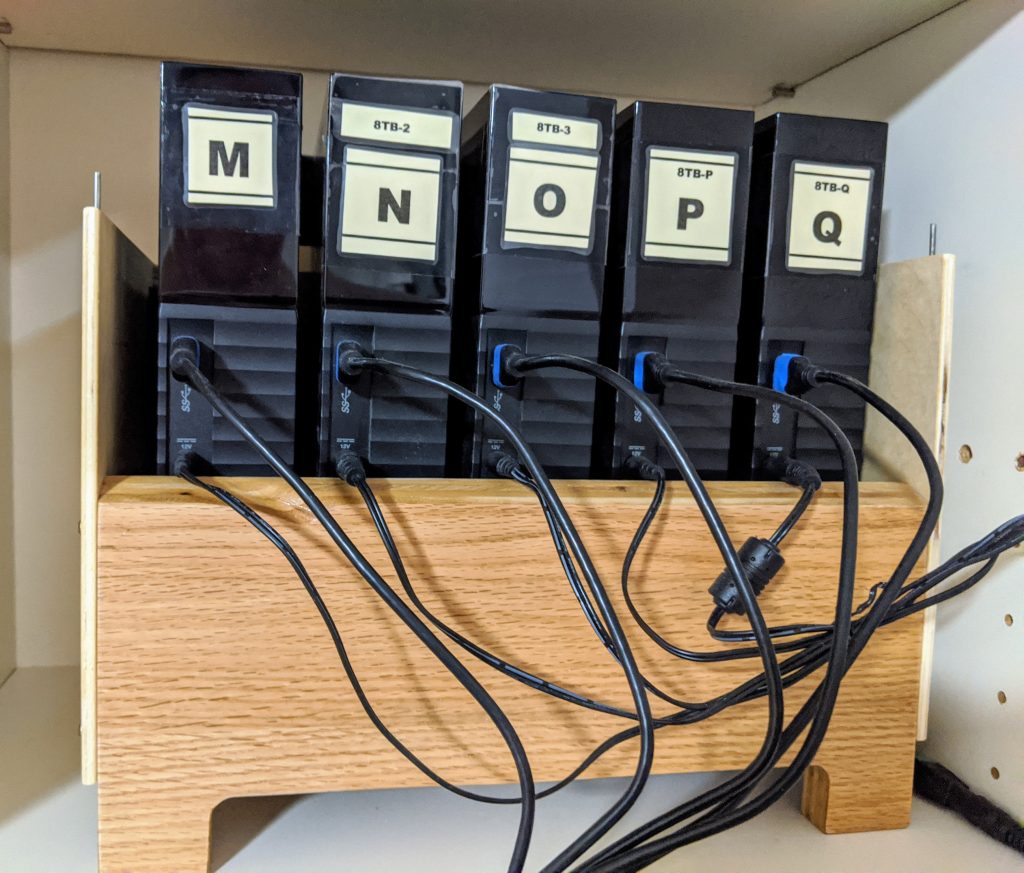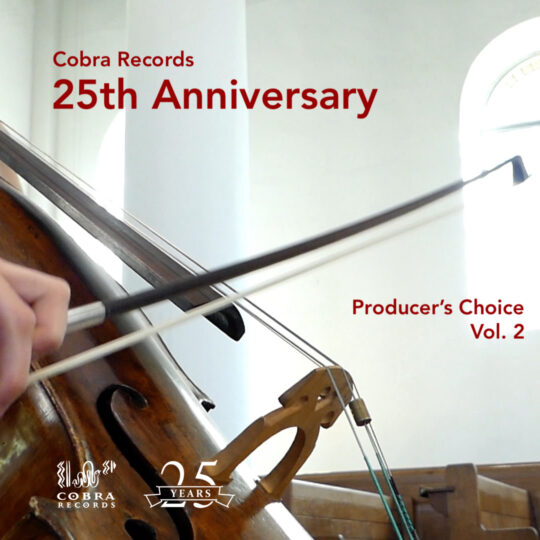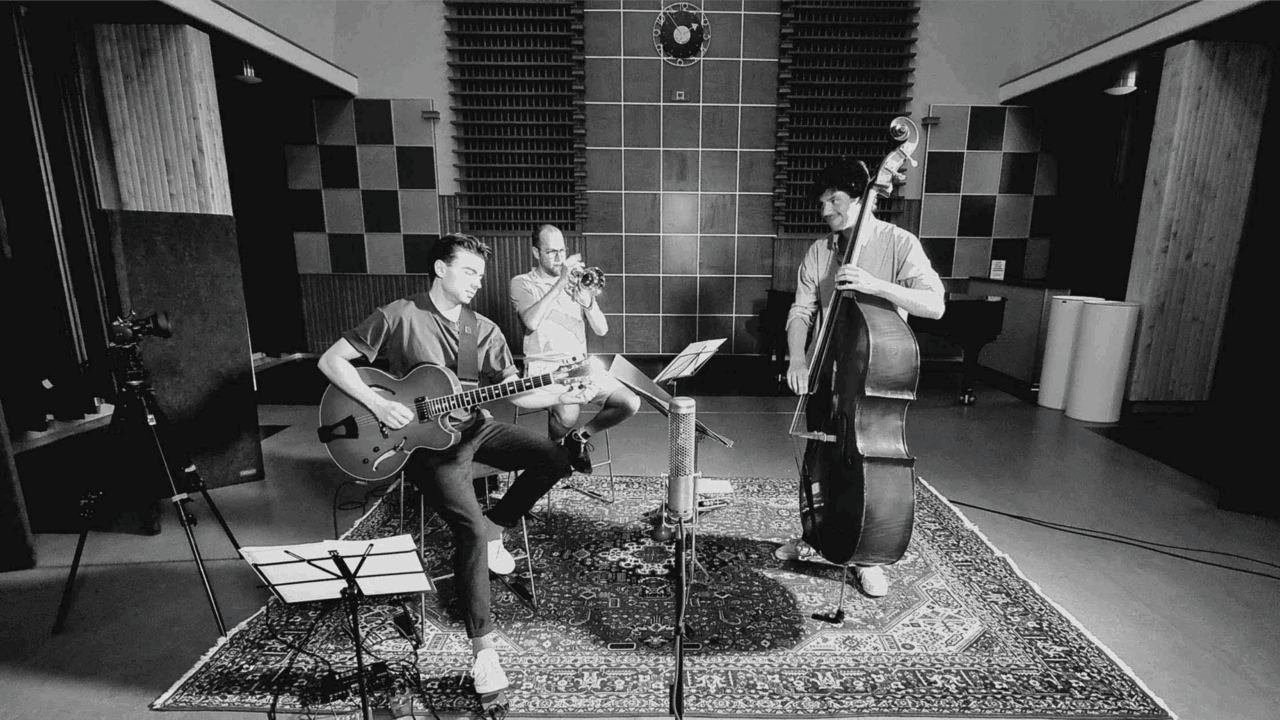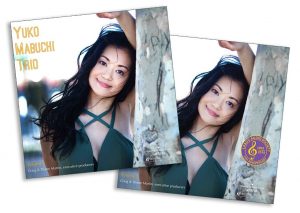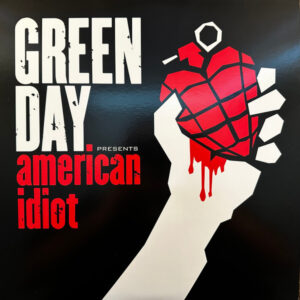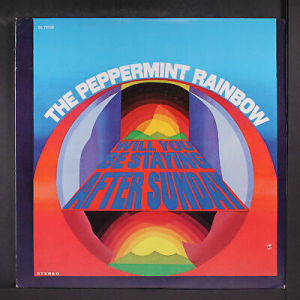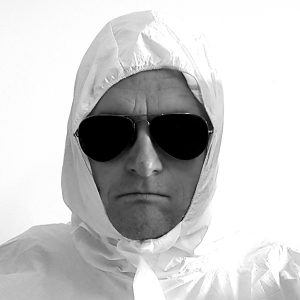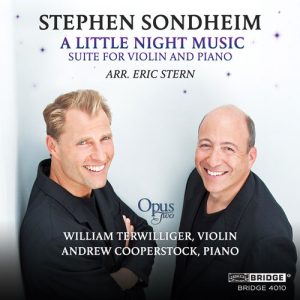The Norwegian classical music label, Lawo Classics, makes recordings I've come to quite enjoy. They find outstanding musicians and make recordings of exquisite sound quality. As I've been exploring their catalog (over 240 titles since 2008), I'm finding a deep treasure of wonderful performances in excellent DXD recorded sound quality. I'm always delighted to see a new release from them. Here are a few of their albums that I heartily recommend.
Arne Norheim: The Tempest (Suite from the Ballet), Bergen Philharmonic Orchestra, Edward Gardner conducting. Lawo Classics 2023 (DXD) HERE
Wow! What a full-throated, full-orchestra roller coaster of a ride through Arne Norheim's The Tempest! Norheim's music is darkly, magically, compelling—almost physical in impact. He synthesizes the ethereal mystic magic of this alternative realm with the dark power of natural forces, while utilizing the full range of orchestral instruments, along with strikingly persuasive use of a broad range of percussion. Norwegian soprano Beate Mordal and English baritone Jeremy Carpenter contribute great strength and aural complexity to the sonic landscape Norheim presents, not so much in text but in vocalizations that further extend this darkly magical world.
The ballet was first seen in May 1979 at the Schwetzingen Festival. The suite heard here is a powerfully compact distillation of Shakespeare's world. The demands this music makes on the orchestra are immense, both collectively and individually during highly exposed solo moments that seem to pop up around each corner.
This is strong modern work of compelling complexity with strikingly diverse color and timbre. If you enjoy Shostakovich or Prokofiev, you will feel right at home here. And you will have a music experience different from either for this is uniquely the musical language of Arne Norheim.
Lawo's consistently excellent balance engineer, Thomas Wolden, gives us another excellently well engineered recording. As usual, he has nicely captured tremendous orchestral inner detail while providing the full breadth and depth of the orchestra and the ambiance of the recording hall. The spot miking to capture instrument highlights is tastefully done, never over-spotlighting but providing enough accent to fully bring out the instrument's contribution to the whole and provide the color and impact the work requires.
Highly recommended for music, performance and recording excellence!
Trio Brax, music for viola, saxophone and piano. Lawo Classics 2023 (DXD) HERE
Released just as I was finalizing this article, I'm pleased to be able to add this new recording by Trio Brax. The combination of instruments is unusual, so much so that there are few compositions available for such an ensemble and three of the works are commissioned by Trio Brax for this album. The mainstay is, of course, the marvelous Trio for Viola, Heckelphone (or Tenor Saxophone) and Piano, op. 47 (1928), by Paul Hindemith. As endorsed by Hindemith, the tenor saxophone is here substituted for the heckelphone, about which you can read in Wikipedia HERE.
Trio Brax, themselves located in Tromsø, Norway, challenged three of Norway's leading contemporary composers to expand the catalog of music available for this trio of instruments so nicely explored by Hindemith, but rarely plumbed since. All three rose to the challenge with works that are uniquely different each from the others and all from Hindemith's opus. These new compositions open new timbres, new combinations of colors, new dynamic explorations. Ranging from whimsical to expressive and virtuosic, these new works are each a delight of discovery. All are eminently accessible.
Performances by Trio Brax are engagingly filled with a lively energy, excellent ensemble, and great technical skill. The recorded sound is clear, clean, and detailed, with a lovely balance of direct and reverberant sound. As with the albums listed below, this release is highly recommended.
Complete String Quartets of Johan Kvandal, Engegård Quartet. Lawo Classics 2023 (DXD) HERE
The string quartets of Norwegian composer Johan Kvandal (1919 - 1999) are challenging. Spanning over 40 years, these quartets have been performed and recorded a number of times, but they present challenges of interpretation and technical skill in performance. This recording by the Engegård Quartet present them with such freshness, such elan, such emotional depth and such incisive technical skill that they rise to the top of the various other performances I've heard. These are very special performances, filled with the elegance and beauty of performance that I've come to know from the Engegård Quartet.
Kvandal's music spans the spectrum, from delightfully bouncy folk-infused to complex modern. His String Quartet No. 1, op. 11 (1946), is accessible, open, vivacious, with hints of folk tunes peeking about the corners. It has been described as Haydnesque neo-classical, and I'll go with that though it sells the music short because there is so much contained in its four movements than this suggests.
String Quartet No. 2, op. 27 (1966) seems almost a reactionary rebuttal to the first. What a difference 20 years makes! The first movement simply explodes, and the Engegård play this dramatic initial explosion for all its worth. The balance of the work is uncompromisingly severe and somber, filled with complex contrasts and dense string sounds with contrasting pizzicato, dense tremolo, and sounds created painfully close to the bridge. This is music not going quietly into the night. I listened intently as this played through the first time, but knew the music would require a second and a third hearing. And the music rewarded each further hearing, particularly late in the evening when all got quiet.
Thank goodness for the intervening Two Norwegian Dances, op. 44 (1976), before diving into the final String Quartet No. 3, op. 60 (1983). The Norwegian Dances are based on tunes from Grieg's Peer Gynt, themselves inspired by traditional folk music, but modernized. One hears the underlying folk tunes very much intact, but the overall music is clearly music of the twentieth century.
Overall, Kvandal's music is modern, but largely tonal. His rhythms, tonalities, contrasting lines are all of an aesthetic that most modern listeners should find understandable and appealing. It is music that I find interesting, engaging and quite happily enjoyable—all with enough challenge and edge to raise the level of intrigue about what may be coming next, often finding a nice surprise.
As mentioned at the outset, the Engegård Quartet make all the difference in my enjoyment of these pieces. They bring a total commitment to the music, combined with an elegant, expansive style that makes one forget entirely just how immensely technically challenging these works must be to play at this level of superb execution. They allow one to simply become immersed in the music because their level of execution causes all of the technical issues to simply fall away from view.
Highly recommended for the excellence of Kvandal's music, the superb performances by the Engegård, and the ravishing sonics captured so beautifully by Lawo recording and mastering engineer Thomas Wolden. Well done!
Engegård Quartet, portrait
Britten/Hagen/Strauss, Ensemble Allegria. Lawo Classics 2022 (DXD) HERE
Opening with the always welcome Variations on a Theme of Frank Bridge by Benjamin Britten, the Ensemble Allegria shows themselves to be a very capable and enjoyable string ensemble. The reverberant acoustics of Sofienberg Church, Oslo, prove nicely suited for their atmospheric performance of this piece. As I listen, I am fondly reminded of the William Boughton, English String Orchestra recording on Nimbus from many years ago, but now in much better sound quality. And this is no slight compliment to this performance and recording. A very welcome addition to the music library here!
Ensemble Allegria continues with a work by a composer new to me, Lars Petter Hagen (b. 1975). The liner notes tell us that Hagen is a Norwegian composer active who is or has been chair of Arts Council Norway, Head of Development of Oslo Philharmonic Orchestra, and Director of the Bergen International Festival. In this work, Strauss Fragments (2020), Hagen's departure is Richard Strauss' Metamorphoses. These six quiet fragments, based on condensed material from Strauss, glide almost fully into one another. And quiet they are! On first listen, my home was disrupted by too many competing noises. I had to come back to listen again in the evening when all other ambient sounds had gone quiet. The reward in hearing these quiet fragments fully revealed was well worth the effort.
The album closes with Richard Strauss' complete Metamorphoses—24 minutes of sublime music exceptionally well performed. This work is a total immersion exercise. Twenty-three solo strings create surges and streams of sound that are at times most bewildering. Ten violins, five violas, five cellos and three double basses—what delightful excess!
Overall, highly recommended.
Ricercare, music of Kvandal, Mortensen and Bræin, Ssens Trio. Lawo Classics 2022 (DXD) HERE
Pronounced "Essence," the Ssens Trio was formed in 2014 by violinist Sølve Sigerland, violist Henninge Landaas, and cellist Ellen Margrete Flesjø. Their debut album (LWC1122) featured trios of Beethoven, and its successor (LWC1170) was devoted to Mozart. This 2022 release highlights string trios by Norwegian composers.
Included are string trios by the reasonably well known composers Johan Kvandal (1919 - 1999) and Finn Mortensen (1922 - 1983), but also Edvard Fliflet Bræin (1924 - 1976) and Bertil Palmar Johansen (1954 -). The name of the album, Ricercare, comes from the title of Johansen's string trio which closes the album. All very nice!
Kvandal, Mortensen and Bræin all wrote “pure” music in which they explored the new compositional devices in their works. They showed how a composer could combine European tradition with a modern temperament to present music that is fresh and new.
Kvandal's early compositions are plagued by that tag of "national" music. He worked to escape that label, succeeding quite successfully in the String Trio, op. 12 (1950) performed here. The work stands out in Kvandal's long list of piano pieces and songs from this period. It is his search to find his own musical expression in a new European music.
I first encountered the music of Finn Mortensen on a Simax LP (PS 1026) that included his brilliant Sonata for Violin and Piano, op. 17 (1958) performed by Frantisek Veselka, violin, and Milena Dratvova, piano. That piece was one of the treasures on my LP shelves that I've not yet replaced. Mortensen is a strikingly modernistic composer, but still very tonal and lyrical. His Trio, op. 3 (1950) performed here clearly presages the direction in which he was headed with his more modernistic inclinations. Influenced by both Hindemith and Schoenberg, Mortensen took it a step further, allowing the international contemporary trends to seep deeper within the nooks of Norwegian musical life. It is a delightful, and yet challenging, piece of music.
Edvard Fliflet Bræin's Trio, op. 15 (1963/64) is one memorably twisted piece of modern music. In a single 6:29 minute Allegro movement, Bræin twists and turns his musical motifs and themes to create variations that lead in seemingly unpredictable directions. He creates a constant fresh rhythmic playfulness between the instruments. Stay alert during this piece!
Bertil Palmar Johansen contributes the titled work Ricercare for String Trio (1996). The entire piece can be seen as an expansive instrumental narrative in which time fluctuates and tempo changes between varying bounds set within each of the three movements. The continued play with stretching and altering tempo seems determined to weeding out any tonal expectations we might be bringing along with us. I've been listening a lot to Dave Brubeck this week (as I write this) and I'm very much minded of Brubeck's constant play with time signatures.
Ssens Trio gives us a set of thoroughly engaging performances in this album. Their ensemble sound is terrific. Their ability to hand off from one to another, or join in one voice, all with an ease and uninterrupted flow of creative energy, is a pure delight to hear. I have very much enjoyed my journey with them across their exploration of music from some exceptional composers.
And while I highly recommend this particular album from them, I understand that modern music may not be to everyone's taste. So, if you're not so adventurous as to join me here, I encourage you to consider Ssens Trio's Mozart or Beethoven albums. I doubt that you'll be disappointed. I've been very pleased with what I hear.
Ssens Trio's Beethoven String Trio HERE. Ssens Trio's Mozart Divertimento HERE
Olli Mustonen String Quartet No. 1 (2016) and Piano Quintet (2014), Engegård Quartet, with Olli Mustonen, piano. Lawo Classics 2021 (DXD) HERE
Works for string quartet and piano quintet by Finnish composer, pianist, conductor Olli Mustonen (b.1967). Can you say, "modern"? Can you say "influenced by Bartok"? His hero. Can you say, "utterly delightful" and "thoroughly engaging"!?!
If you like Bartok's string quartets, as I do, you should really give these works by Mustonen a listen. No, they are not clones of Bartok by any means. But they are very much influenced by Bartok and work on many of the same levels of communication as Bartok's quartets. One will also hear influences of Shostakovich and Sibelius, as well as more recent trends in minimalism and neo-Baroque. All have been absorbed into Mustonen's compositional make-up.
These works are intense, they are playful; they are serious, they are slyly humorous. I am quite enchanted. And, as with the Bartok and Shostakovich, they sound very, very challenging to perform.
And the Engegård Quartet deliver their usual superb performances. As with their performances, Engegård's work together here shows seamless ensemble, and huge technical capabilities. How can they make some things so clearly difficult sound so effortless? They just do. Well done! And highly recommended. I hope they choose to record more of Mustonen's work.
The power of these recordings is enhanced by superb sound quality from mastering and recording engineer Thomas Wolden who captures an acoustic with plenty of air and bloom, yet filled with detail and impact.
Engegård Quartet - Arvid Engegård (violin), Alex Robson (violin), Juliet Jopling (viola), Jan Clemens Carlsen (cello).
Formed in 2006, the Engegård Quartet have a bold, fresh interpretations of the classical repertoire with a deep attachment to their Scandinavian roots. Deeply committed to today's composers and to keeping the string quartet repertoire alive and developing, the Engegård Quartet has commissioned several works throughout their career, with a focus on on Norwegian composers and the Finnish pianist and composer Olli Mustonen (as in this album).
I encourage you to explore their other recordings on the Lawo Classics and 2L labels (HERE):
William Walton and Christian Sinding Viola Concertos, Eivind Holtsmark Ringstad, viola, Oslo Philharmonic Orchestra, Joshua Weilerstein and Arvid Engegård conductors. Lawo Classics 2017 (DXD) HERE
This album with violist Eivind Holtsmark Ringstad performing the Walton and Sinding Viola Concertos is a beauty. Of course, it helps that I'm a fan of both composers' works. But even more helpful are the excellent performances by Ringstad and the Oslo Philharmonic Orchestra.
The Walton Viola Concerto for Viola and Orchestra (1929) has an interesting and fraught history. Walton commenced working on it at the suggestion of Sir Thomas Beecham who encouraged him to write a concerto for the viola virtuoso of the day, Lionel Tertis. When Walton delivered to Tertis the finished score after a year working on it, Tertis turned it down flat. Following some revisions, Walton next was able to get Paul Hindemith, both a composer and an eminent violist, to premier the work. Neither was happy with the premier. Walton thought Hindemith's performance "rough" and Hindemith didn't like the orchestra. Fortunately, the audience liked the work and it was well received by the critics. And today, the work is regularly performed.
In this release, we get quite a nice performance of the Walton from Ringstad, who simply sails through the challenges of the piece. Lots of expressiveness, excellent interaction with the orchestra, very attractive tone—Ringstad brings a lot of very enjoyable music making to this performance. And conductor Joshua Weilerstein and the Oslo Philharmonic Orchestra are very willing and engaging partners to the performance. In a glib moment, I was inclined to comment to Ann, "And great fun is being had by all." For indeed, this performance is both very well played and great fun to hear.
Christian Sinding (1856 - 1941) is some 40 years Walton's senior. Though he remained in Germany for much of his life and even spent time in the USA, Sinding was viewed as a Norwegian composer second only to Grieg in standing in his lifetime. But in contrast to Grieg, Sinding's style was more overtly influenced by that of Liszt and Wagner. Rarely did he make significant use of Norwegian folk elements, as did Grieg.
Sinding's Suite in A minor Op 10, was written 'in the old style' for violin and piano in 1889 and orchestrated soon afterwards. Sinding's understanding of the violin is evidenced in the fact that the Suite's most adoring fans have been violinists too: Jascha Heifetz and Fritz Kreisler performed the work throughout their careers.
Ringstad's performance of the Suite is alert, stylish and very technically proficient. He plays with panache. And the longer lyrical lines in the second movement are simply beautifully played, with nice delicacy and warm resonant tone. The orchestra, now conducted by Arvid Engegård, is unfortunately not as equal a partner here as in the Walton—adequate but not at the level of performance Ringstad delivers. It sometimes feels as though he must pull them along with him. Nonetheless, Ringstad's performance is well worth the cost of admission in my book—he is just superb.
The recorded sound captured by Lalo's principal recording engineer, Thomas Walden, is quite excellent throughout. A very traditional microphone and instrument placement gives us a very nice lateral sound stage with good inner detail, excellent dynamics, and nice full frequency extension.
I'm delighted to have this recording of both works; they are both eminently enjoyable. And Lawo's sound quality simply enhances everything.
Lasse Thoresen Symphonic Concerto for Violoncello and Orchestra, Amalie Stalheim, cello, with Oslo Philharmonic Orchestra, Ingar Bergby, conductor. Lawo Classics 2021 (DXD EP) HERE
Just a single work performed on this EP release, but such a nice work it is. Lasse Thorensen composed this 41-minute piece in 2006 - 2008 on a joint commission from the Oslo Philharmonic and Radio France. In this 2020 performance, Amalie Stalheim gives an interpretation that is beautifully detailed, and the entire piece is played by both soloist and orchestra with impeccable clarity (perhaps due in part to the excellent Lawo recording?). Very modern, but filled with interesting textures and tonal explorations. It is not structured as a standard concerto. It is much more like a collection of symphonic poems than as a traditional concerto. It certainly explores the full range of orchestral instruments and textures, with the cello being dominant.
If you like modern tonal music, or would simply like to explore something that may be very different, I highly recommend this album.
Sibelius Orchestral Songs, Marianne Beate Kielland, Norwegian Radio Orchestra, Petr Popelka conducting. Lawo Classics 2022 (DXD) HERE
I enjoy the music of Sibelius. But I don't know any of this music for song, which was extensive. I also enjoy the vocal range of a mezzo-soprano voice, but I don't know Marianne Beate Kielland (though I shall become more familiar after this recording). So, this album was an exploration for me. And I love it!
Kielland's voice is rich, full and expressive, without being plummy. She has a lovely delicate touch to her singing which I very much like. And her phrasing is eminently expressive, even without knowing the translation of the texts she sings. Also, she seems to have an inexhaustible reserve of power in her voice without every sounding strident. Just excellent.
The recording nicely balances Kielland's voice with the orchestra. She is very much the focal point, but not spotlighted as sometimes happens. Instead, we have a very nice partnership of solo voice and supporting orchestra, both completely and sympathetically and supportively in sync with each other. Instrumental detail, such as the harp in "Fågellek" (Op. 17, No. 3), is clear and detailed, with excellent capture of timbre.
Enthusiastically recommended.
Recording session for Sibelius Orchestral Songs, Marianne Beate Kielland, Norwegian Radio Orchestra, Petr Popelka conducting, NRK Radio Concert Hall, Oslo, 9–12 February 2021
Telemann 12 Solo Fantasias, performed on recorder, Caroline Eidsten Dahl. Lawo Classics 2022 (DXD) HERE
Telemann Recorder Sonatas for recorder, baroque cello and harpsichord, Caroline Eidsten Dahl, Christian Kjos, Kate Hearne. Lawo Classics 2022 (DXD) HERE
Sonata Norwegica, Caroline Eidsten Dahl, Ensemble Freithoff. Lawo Classics 2022 (DXD) HERE
I have to admit to a weakness for recorders. I love the "woody" timbre (is that even a proper description) and the variety of all the different tonal ranges in which recorders are made. And, when playing music of the Baroque, there is nothing better than a good recorder, to my tastes. Leave the metal flutes in their cases, please.
Caroline Eidsten Dahl, heard in these recordings, is a true master of the instrument. She plays a tenor recorder, so there is no variety by type, but there are wonderful sounds and music to be heard in these albums from Lawo. The first two albums are all Telemann (he whose inventiveness was inexhaustible).
The third album shifts to baroque composers active in Norway: Johan Henrik Freithoff (1713 - 1767), Georg von Bertouch (1668 - 1743), Henrik (Hinrich) Philip Johnsen (1717 - 1779), and Johan Daniel Berlin (1714 - 1787). All are new to me. All proved quite enjoyable.
Dahl's technique seems as inexhaustible as Telemann's inventiveness. She plays with immaculate skill, but expressively—quite a lovely match to the felicities of Telemann's music. Her solo performances in the Fantasias are engaging, flexible, and nicely nuanced. I was surprised to look up and see that she's completed the first nine fantasias without me losing focus on her recital in the slightest. For a sequence of solo works like this, that is quite a complement to how engaging a performer she is.
The ensemble work on the Telemann Sonatas is equally engaging, and her partners on baroque cello and harpsichord acquit themselves most admirably. Here there is a good bit greater variety of sound and timbre with the additional instruments, all of which blend most deliciously. The trio plays with nice ensemble and vivacity. Altogether, most enjoyable.
Sonata Norwegica gives us something quite different but also of the Baroque. It is different by the collaboration with Ensemble Freithoff. Now we have pieces featuring recorder, but performed with a ensemble comprised of baroque violin, baroque cello, lute and harpsichord.
The recordings are all engineered by Thomas Wolden and, as usual, he gives us some very fine sonics that support and enhance the music very nicely. The instruments are recorded in rooms with very nice natural acoustics, and Wolden gives us very precisely located images within the soundscape while allowing us to hear the natural air and reverberation of the space. Dynamics, detail, frequency extension, and overall tonality are all very, very nice. Well done!
I consider all three of Dahl's albums very attractive additions to my music library and all are highly recommended. If you have to choose, I don't envy you the challenge but I hope the brief summary above will lead you to the combination of music and instruments that best suits your taste.
Loudmouthed Beauty, Concert Pieces for Bass Trombone, Clare Farr. Lawo Classics 2021 (DXD) HERE
And for something entirely different, I just have to include Clare Farr's Loudmouthed Beauty an album filled with music for bass trombone. How often do we get this sonic treat?!? Usually a bass trombone is hidden somewhere down in the nether reaches of the orchestra's sonic stage. Well, not on this album—here it is front and center in all it's deep blatty glory as Farr treats us to an exploration of the full range of this intriguing brass instrument. I can't begin to imagine the breath control required to play these pieces—just amazing. And, yet, she shows us just how delicate this massive instrument can also be.
Farr writes, "Despite its loudmouthed reputation, there is so much beauty in the bass trombone. The aim of this album is to showcase all the best sides of the bass trombone: robust yet fragile, colorful and flexible, juicy bass notes and beautiful melodies. By commissioning and playing new works and allying myself with great friends on trombone, organ, harp and piano, I have attempted to give new color to the bass trombone repertoire. I hope the album can be of inspiration for many future bass trombone recitals."
The works included are varied, interesting, and in many cases quite fun. If you are able to sample but a single track from this album (which you can do in full track 48kHz samples on the NativeDSD site), let me suggest you listen to the trombone duo, "Conversation," track 10. Here you have trombone and bass trombone speaking back and forth to each other, just as friends might. It is a nice demonstration of the timbre, flexibility and range of these instruments.
To say that I enjoyed this album immensely is simply and understatement. Heartily recommended.
J.S. Bach Orgelbüchlein, Volumes 1 & 2, Kåre Nordstoga. Lawo Classics 2021 (DXD) HERE and HERE (and also as a bundle HERE)
J.S. Bach Toccatas, Preludes and Fugues, Kåre Nordstoga. Lawo Classics 2019 (DXD) HERE
I am a huge fan of well played organ music, particularly organ music of the Baroque played on the classic North European organs, and if you can make that a tracker organ then all the better. Recently I've been listening to the series of organ recordings on Lawo performed by the cathedral organist at Oslo Cathedral, Kåre Nordstoga, as he performs Bach on the beautiful (and wonderous sounding) organs at St. Johannis, Luneburg, and St. Bavo, Haarlem. These are not tracker organs, but their sound is just gorgeous in these recordings from Lawo.
On the Christian Müller Organ (1735 - 1738) in St. Bavo Church, Haarlem, Nordstoga performs Bach's Orgelbüchlein, released by Lawo in two volumes. And this recording is full, resonant, well detailed, and gorgeous. Nordstoga is an extraordinarily skilled organist, with excellent technique. His playing is well matched to the reverberation time of the church and all stays immensely articulate and well defined—no muddiness here. Might a prefer just a touch faster tempo in some of the pieces? Yes, but not in this reverberant space—Nordstoga has judged this well, in my opinion. And, to my ear, this organ has a beautiful sound. Clear, tonally beautiful, and with huge reserves of power.
On the St. Johannes church organ in Luneburg, Germany, Nordstoga performs toccatas, preludes and fugues by Bach. He begins with the mighty Toccata and Fugue in D minor, BWV 565, which is always a joy for me to hear. And here the recording captures a performance with great clarity. The reverberation never muddies the notes, but adds immensely to the grandeur and power. Nordstoga, thankfully, does not play this piece reverentially—he moves briskly right along with dynamic drive and commitment maintaining immensely clean articulation throughout. I credit this both to his own sensibilities and to the organ on which he performs.
The rest of the album moves along similarly. All of it is beautifully captured by Lawo's principal recording engineer, Thomas Wolden, who very nicely captures the direct sound from the pipes together with very judicious capture of the reverberant acoustic environment of the church. Well done!
If you at all care for organ music and the compositions of Bach, these three albums are highly recommended.
Notes about the organs
The organ of the St. Bavo church in Haarlem is one of the world's great organs. It was built by Christian Müller and Jan van Logteren, from Amsterdam, between 1735 and 1738. Upon completion it was the largest organ in the world with 60 voices and 32' pedal-towers. Many famous musicians played this organ, including Mendelssohn, Händel and the 10-year-old Mozart, who played it in 1766. The organ was modified a number of times in the 19th and 20th centuries and most drastically altered in the renovation by Marcussen between 1959 and 1961. For a complete stop list, click HERE.
A friend commented to me when I mentioned this recording, "I've heard that organ. It makes an absolutely enormous sound. It prompted me to buy a recording, that only served to confirm to me the limitations of domestic audio. The organ is the size of a house and if you could fit it in a house it wouldn't last long." Yes, it is a challenge playing this recording back realistically! Just can't do it. But, it's nice to get as much of the facsimile as heard in this Lawo recording.
Christian Müller Organ (1735 - 1738) in St. Bavo Church, Haarlem (Photo Creative Commons)
St. Johannis is the oldest Lutheran church in Lüneburg, Germany. It is located in the city center. The church's organ was finished in 1553 by Hendrik Niehoff and Jasper Johansen and rebuilt in 1714 by Arp Schnitger student, Matthias Dropa and in the later 20th century by Rudolf von Beckerath. As a young man, Johann Sebastian Bach was resident (1700 - 1702) at a school attached to the nearby Michaeliskirche, where he appears to have been a kind of organ scholar. Documentary evidence suggests, in the opinion of Bach scholar Christoph Wolff, that Georg Böhm gave Bach organ lessons at St. Johannis.
This organ is smaller than the organ at St. Bavo, but this doesn't detract from the beauty of its tone or clarity. For a complete stop list, click HERE.
Organ at St. Johannis, Luneburg (Photo Creative Commons)
Some final thoughts for this essay...
I have to bring this article to a close, else I'd add album after album after album. My goal has been to give you and introduction to Lawo Classics in hope you might find something to spark your interest in further exploring their extensive catalog available at NativeDSD in full original DXD resolution, DSD (64-512 fs), and lower PCM resolutions, HERE. Most (all?) of their releases are recorded/mastered by Thomas Wolden and produced by Vegard Landaas. They do a simply wonderful job making very detailed and natural sounding recordings in lovely acoustic venues, with excellent artists. And the sound quality of Lawo's DXD file downloads from NativeDSD is always very audibly better than CD, SACD or lesser resolution file downloads found elsewhere. Enjoy!




